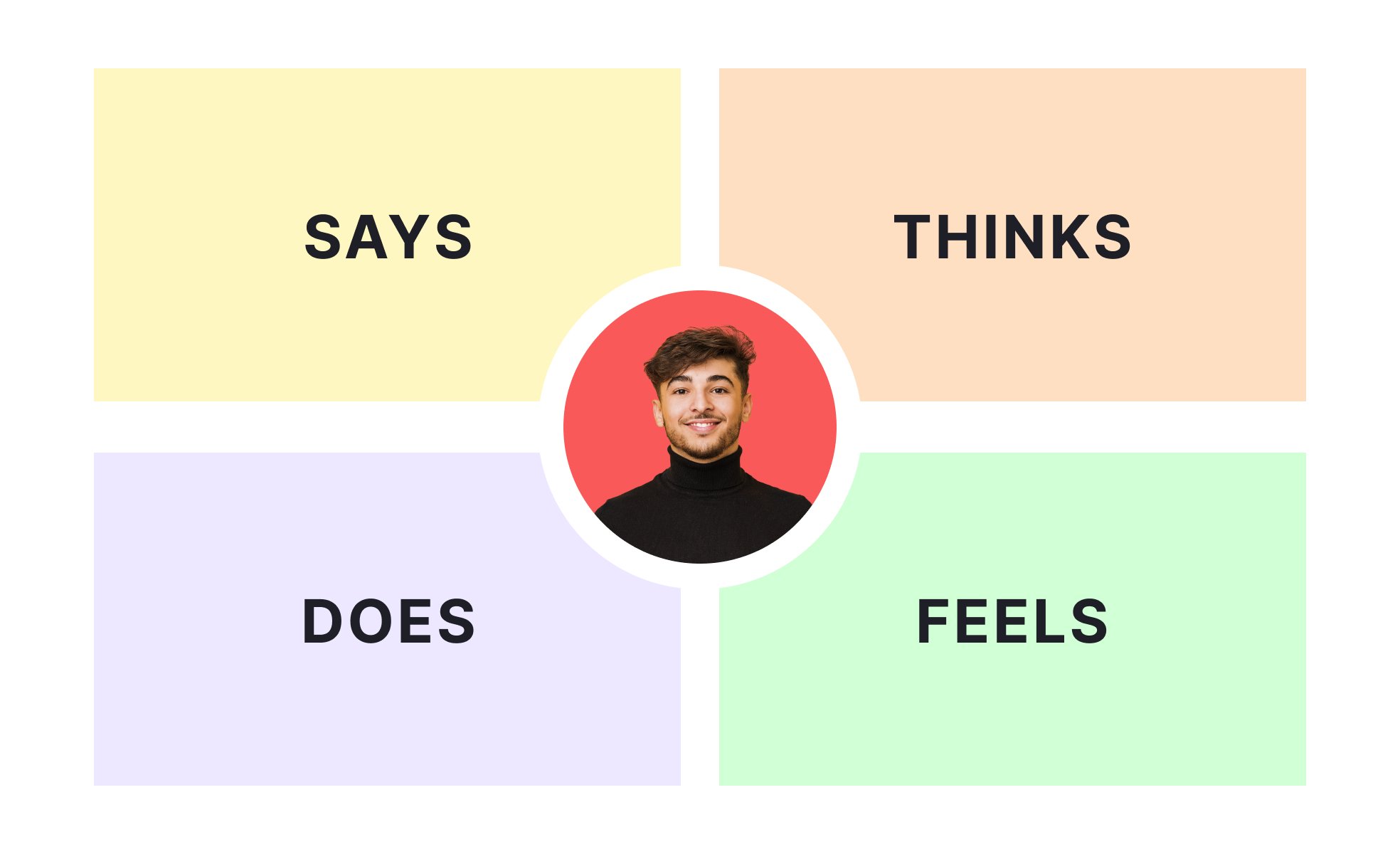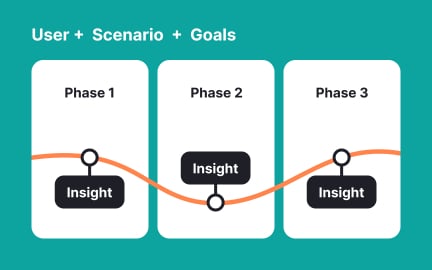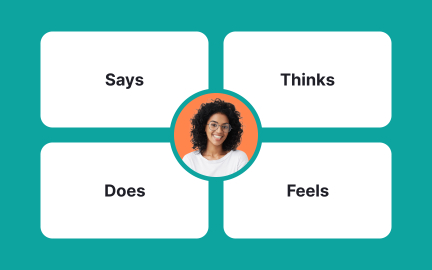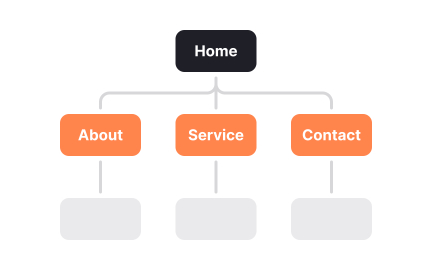Empathy Maps
Empathy maps visualize what users think, feel, say, and do, helping design and product teams build deeper understanding and more human-centered solutions.

An empathy map is a collaborative tool that captures a user’s emotions, behaviors, and perspectives in a structured format. It goes beyond demographics or simple personas by focusing on what users actually experience. Teams use it to align around real user needs rather than assumptions.
In UX, empathy maps typically divide insights into quadrants: what the user thinks, feels, says, and does. These perspectives provide a fuller picture of motivations and frustrations. For example, a user might say they enjoy an app, but their behavior shows they rarely log in, signaling hidden friction. By visualizing these contradictions, designers can address deeper issues.
Product managers benefit from empathy maps when defining priorities. Understanding not just what users do but how they feel allows PMs to craft strategies that resonate emotionally. For instance, if research shows users feel anxious during checkout, the roadmap might include redesigning payment flows to reduce cognitive load and increase trust.
Empathy maps are also valuable in cross-functional collaboration. Designers, PMs, engineers, and marketers can create them together, grounding discussions in shared user perspectives. This shared understanding helps teams make decisions that are user-centered rather than opinion-driven.
Real-world examples show their power. A SaaS platform discovered through empathy mapping that small-business users felt overwhelmed by onboarding. By redesigning onboarding flows with clearer guidance, engagement and retention improved significantly. The exercise gave structure to insights that were previously fragmented.
Unlike personas, empathy maps are flexible and easy to update. They work best as living documents, revised as new research emerges. This adaptability makes them practical tools for fast-moving teams.
Learn more about this in the Why Empathy Maps are Important Exercise, taken from the Empathy Maps in UX Research Lesson, a part of the UX Research Course.
Key Takeaways
- Capture user emotions, thoughts, words, and actions.
- Help uncover contradictions between what users say and do.
- Product managers use them to prioritize emotional pain points.
- Support alignment across cross-functional teams.
- Work best as living, adaptable documents.
Personas describe a user archetype, including demographics, goals, and challenges. Empathy maps, on the other hand, focus on lived experiences and emotions. They capture a specific moment in time, often tied to a journey or scenario.
Together, they provide richer insight. Personas give a broad picture, while empathy maps add emotional and behavioral detail. Teams often use both in combination for maximum clarity.
They are most useful at the start of projects, during discovery. Creating empathy maps early ensures the team understands user perspectives before defining solutions. They can also be revisited after testing to validate or refine assumptions.
By making empathy mapping a recurring activity, teams maintain a user-centered focus throughout the product lifecycle.
Empathy maps provide a visual, easy-to-digest format that sparks conversation. Cross-functional workshops often lead to shared insights that reduce silos and misalignment.
By grounding decisions in what users feel and do, teams align more quickly, minimizing subjective debates. The map becomes a neutral artifact that speaks for the user.
Recommended resources
Courses

Introduction to Customer Journey Mapping

HTML Foundations

Mentorship Mastery
Lessons

UX Design Deliverables

Empathy Maps in UX Research

Pre-ideation and Fast Idea Generation Techniques
Projects

Empathy map for Degroof Petercam

Empathy map













